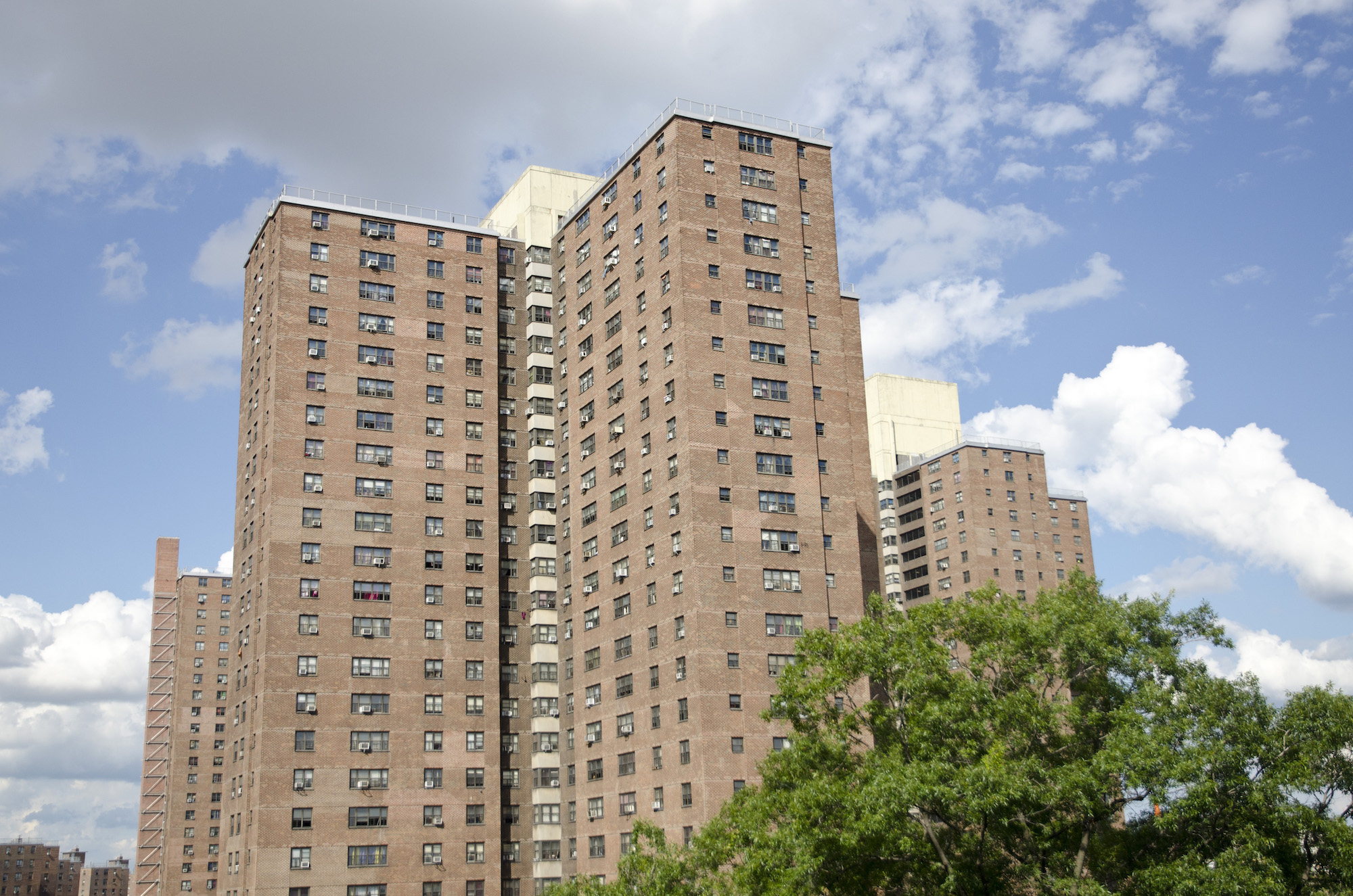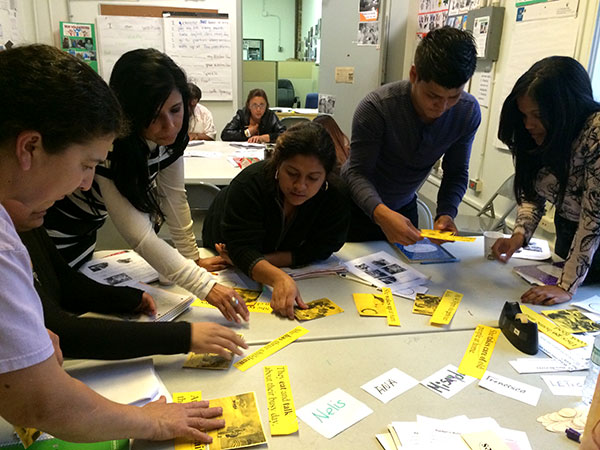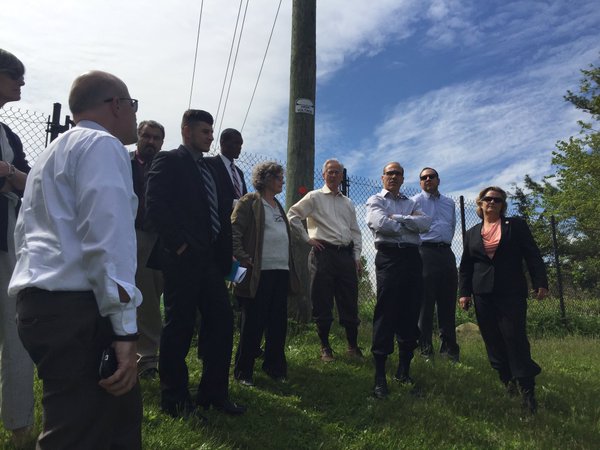City Should Call an Eviction Moratorium

photo: Edward Blake via Flickr
One fear that is prevalent in every borough of New York City is the threat of eviction. Gentrification and the ever increasing housing affordability gap makes staying in an apartment harder and harder each year for thousands of tenants. Evictions are handed down in Housing Court, where the odds do not favor low-income tenants.
As of 2015, an estimated 90 percent of these tenants go through Housing Court without legal representation. In attempts to combat this, the New York City government has provided millions in funding to legal advocacy organizations to defend tenants in Housing Court and prevent evictions. As a result, New York saw an encouraging 18% decrease in the number of evictions in 2015 due to the increase in assistance of legal services. While this additional funding is making strides in helping combat high eviction rates, these efforts are not doing enough.
In order to provide real assistance and protection to its low-income residents and tenants as well as reduce racial discrimination, New York City should call for an indefinite temporary moratorium on evictions.
In September of 2015, I began work as a legal intern at the Safety Net Project at Urban Justice Center. For nine months straight, I spent hours at Bronx Housing Court with hundreds of tenants, conducting intakes for potential clients for the attorneys to represent in Housing Court. During this time, I realized that one way to address the housing and eviction crisis in New York City could be a temporary moratorium on evictions.
In a city plagued with homelessness, a poverty crisis, and drastic rates of gentrification, by instituting an eviction moratorium city government would not only be assisting its low-income residents, but also relieving its overburdened court system and the organizations trying to help tenants.
A moratorium on evictions, while it sounds extreme and improbable, would actually be quite feasible and beneficial.
Landlords, while not being able to evict tenants, would still be able to collect money settlements. This could take place in Small-Claims, Civil, or even the Supreme Court. During this indeterminate period, New York would be able to reevaluate its current housing crisis and come up with better multi-faceted solutions while thousands would not be threatened with homelessness.
The city, not burdened with the cost of both evictions and rising shelter expenses, could shift its focus and funding to other programs such as new or increased housing subsidies. Because of the inadequate number of affordable apartments, new and additional subsidies would allow access to a wider population of New Yorkers, thus diminishing the homeless population. This would result in annual savings at shelters throughout the city as well.
Housing Court and evictions demonstrate not only injustice against low-income tenants, but also racial discrimination. If you walk into Housing Court in Brooklyn, the Bronx, Manhattan, Queens, or Staten Island, you see clearly that the majority of tenants are people of color. Approximately seven of every ten clients I spoke to at Housing Court were African-American women. This opens up an even wider conversation about discrimination based on race and gender where black men are locked up and black women are locked out. An eviction moratorium would potentially limit these racially discriminatory practices.
Various types of moratoriums have actually taken place all across the country and yielded positive results.
In Salt Lake City, a one-year impact fee moratorium was imposed to help reassess the dysfunctional collection fee system. Recently, Oakland, California approved a 90-day freeze on rent hikes and an eviction moratorium to help the city deal with its ever-growing housing crisis. Chicago instituted an official annual moratorium on evictions from December 18 through January 5 to give tenants a holiday reprieve. This moratorium is also in effect when temperatures reach 15 degrees or colder or when severe weather conditions would make it dangerous to evict tenants. Moratoriums like these give cities time - opportunity to assess, reevaluate, and change any facet of policy that negatively affects tenants, recognizing that housing is a basic right and essential to pursuing other aspects of life. New York should be able to institute something similar.
Currently, the only existing eviction moratorium in place is the annual and informal practice conducted by marshals, who typically cease all evictions during the Christmas holiday into the new year. However, while this practice is neither sanctioned nor uniformly widespread, it does not address the larger issue of the vast number of low-income New Yorkers who are displaced from their housing each year. Another eviction moratorium, an official one, took place in 2012 after Hurricane Sandy. While no formal statistics could be found to show the benefits of these moratoriums, both led to more tenants in housing and reduced costs to the city for expenses like shelters.
In the fast-paced City of New York, tenants have seen rapid gentrification, judges pushing for settlements instead of fair decisions, and landlords seeking quick evictions. A moratorium on evictions would effectively slow down this process, keep people in their homes, provide more subsidies to put more people into new homes who currently do not qualify, and save the city money.
Lastly, New York stands as a beacon of change on many issues. Evictions are a national epidemic. A New York eviction moratorium would act as an example for the rest of the country, thus leading to fewer homeless Americans across the country. It should not take the Christmas spirit or a devastating hurricane to call the city to act in defense of its most vulnerable residents. A housing disaster is already taking place.
***
Tyler Tagliaferro is a double major in Political Science and American Studies at Fordham University.
***
Have an op-ed idea or submission for Gotham Gazette? Email This email address is being protected from spambots. You need JavaScript enabled to view it.
A Budget for the City of Immigrants

Students of an adult literacy class (photo: Make the Road New York)
In recent years, New York City has taken major strides forward in its engagement with immigrant communities. Under the leadership of Mayor Bill de Blasio, City Council Speaker Melissa Mark-Viverito, and the Council as a whole, our city has adopted and invested in new initiatives to welcome and protect immigrants and embrace their tremendous economic, cultural, and political contributions.
Now, with the 2017 budget process in final negotiations, our leaders have a key opportunity to further address the barriers to opportunity and equity that immigrant communities continue to face. That’s why today, five leading immigrant organizations are releasing a new report, “A Budget for the City of Immigrants,” which identifies key policy areas in which immigrant communities need further investment.
Despite path-breaking initiatives like IDNYC (the municipal identification card program), ActionNYC (one of the nation’s first large-scale municipal navigation and outreach programs to connect people to free immigration legal screenings), and the New York Immigrant Family Unity Project (the nation’s first program to guarantee counsel to low-income immigrants facing deportation), immigrants still face enormous challenges in accessing public services, getting the support to succeed in the workforce, and being informed of their rights.
The new report highlights key priorities across various issue areas, ranging from adult education to youth programs to health care access, but a few priorities bear particular mention.
First, our City must expand its investment in adult literacy to a baselined $16 million per year.
Adult newcomers who have come here to work and support their families often struggle with limited English proficiency (LEP). Despite enormous demand for adult literacy classes, supply has lagged—less than three percent of those in need can access community-based adult education programs. A recent Make the Road New York and Center for Popular Democracy report, “Teaching Toward Equity: The Importance of English Classes to Reducing Economic Inequality in New York,” highlights how meeting the language needs of LEP New Yorkers would both further immigrant integration and generate billions of dollars in new earnings. New York City can lead again by making sure that adult immigrants can learn English and develop the tools they need to thrive.
Second, our city must direct $13.5 million for immigration legal services for complex cases.
Currently, New York City provides few resources for complex immigration legal cases where an individual is facing imminent deportation yet cannot be served under most existing funding streams. This leaves thousands of immigrants on waiting lists. A survey by the New York Immigration Coalition of the city's legal services providers noted that 60% of immigrants seeking their services had complex cases that need intensive representation. Further resources must focus on these complex immigration cases—especially for families who are on the verge of being torn apart without adequate legal representation.
Third, our city must expand its investment in Access Health NYC to $5 million.
This new City Council initiative has shown tremendous promise by working with community organizations like the Coalition for Asian American Children and Families to educate immigrants about health care options and enroll them for coverage, wherever possible. Health care access is another area where our city has shown leadership, and it should expand its commitment in this budget year.
Fourth, our city must move forward with the investment of $868 million in capital funding for the construction of new classrooms and schools to combat overcrowding and pursue additional means to meet the more than 100,000 school seats needed citywide.
The 2017 budget must include strong investment to address this widespread problem, while our leaders explore further action in future years to fix it once and for all.
Finally, New York City must take further steps to strengthen the landscape of grassroots, immigrant-led nonprofit organizations that are the backbone of our communities yet often struggle, as the Asian American Federation and the Federation of Protestant Welfare Agencies have noted, to operate on a level playing field with larger organizations.
By increasing the Nonprofit Stabilization Fund to $5 million and amending municipal contracting policies to open new opportunities for these smaller organizations, the city can go a long way to strengthening immigrant communities as well.
The priorities outlined in A Budget for the City of Immigrants, of which these are just a few, show concrete opportunities to consolidate the progress our city has made with respect to immigrant communities and ensure that we continue to move forward. With immigrant communities at the heart of our global city, we must use this budget cycle to continue to lead the way in welcoming and protecting immigrants.
What is good for immigrant communities is good for New York City, the city of immigrants.
***
Javier H. Valdés is the Co-Executive Director of Make the Road New York. Steve Choi is the Executive Director of the New York Immigration Coalition. On Twitter: @MaketheRoadNY & @thenyic.
***
Have an op-ed idea or submission for Gotham Gazette? Email This email address is being protected from spambots. You need JavaScript enabled to view it.
Misguided 'Reform' Threatens to Undo Progress

BP Oddo, the author, with a group on Staten Island (photo via @StatenIslUSA)
The divide is even greater than I feared.
The chasm between how folks across this city see our world is even wider than what it seemed. As a Republican fully aware he’s in a blue city - a guy who once led a merry band of between two and five GOPers in a legislative body of 51 - I know better than most how disparate the various points on the political spectrum are in this town, and how the perceptions, reality, and everyday feel differs across New York City.
I lived that divide and operated within it when I was in the City Council. And to deliver for the smallest, least politically influential borough, one that was either ignored, neglected, or treated as fifth of five except during the Giuliani years, I figured out how to respect the divide, maneuver within it, and effectively represent my community.
So when I say the breach is even more expansive than I once feared, it truly is.
The City Council’s Criminal Justice Reform Act is intended to help New Yorkers represented by a majority of the City Council. It’s intended to address problems that are real to them and their constituents. With that said, to folks who live on Staten Island like me, and those in other areas such as Southwest Brooklyn, parts of Queens, and parts of the Bronx, this package represents a chainsaw where a scalpel is needed. We should not be encouraging people to think we don’t care about negative behavior like urinating in public or throwing trash on the ground.
Ultimately, the bills are Miracle Grow for the perception that lawlessness lurks around the next corner, a perception that we know can feel awfully similar to reality. A furthering of this ideological agenda corrosively eats away at the thin line between civilized communities and disorder.
For the love of Pete (not Pete Vallone Jr. or Sr., but man, where have you guys gone...), can’t we even agree in this town that litter is wrong and should be punished as often and in as financially impactful a manner as possible? One unified voice coming from the Council and other sectors of city government should be all of us saying to the city agencies that the guy who throws the bag of White Castle burger remnants out the window of his car and the mocha latte drinker who flings her empty plastic cup indiscriminately into a street should pay dearly.
But we can’t even agree on that. As someone who has spent too much time, energy, and taxpayer money these last 28 months as Borough President trying to change the behavior of the selfish, ignorant Staten Islanders who continue to litter, that hurts my head.
I am keenly aware that in many ways - from home and car ownership percentages to housing typology and various other barometers - Staten Island more closely resembles the rest of America than the other four boroughs. I understand this is a left-of-center town during this “progressive” era of local government, but some truths are grounded in history and history should not need to repeat itself for us to understand the consequences of actions like passing the Criminal Justice Reform Act. So-called quality-of-life offenses rob residents of the city they deserve and expect. As a city we should be doing more to discourage litterers and those engaged in public urination and other anti-social acts on behalf of the overwhelming majority of New Yorkers who don’t engage in these behaviors.
Whether folks liked or disliked Rudy Giuliani, his unquestioned, greatest and lasting legacy is that every New Yorker now has a heightened expectation of how safe and orderly New York City should be. Individually and collectively we will never tolerate a return to the “bad old days.” I am not one who embraces the screaming tabloid headlines announcing the 1970s have returned. That’s silly. I simply don’t like seeing perhaps well-intentioned, but nonetheless misguided steps, even small ones, in that direction.
***
James Oddo is the Staten Island Borough President and a former Minority Leader of the City Council. On Twitter @HeyNowJO.
***
Have an op-ed idea or submission for Gotham Gazette? Email This email address is being protected from spambots. You need JavaScript enabled to view it.




